Chengjiang Li
Interpretable and Low-Resource Entity Matching via Decoupling Feature Learning from Decision Making
Jun 08, 2021
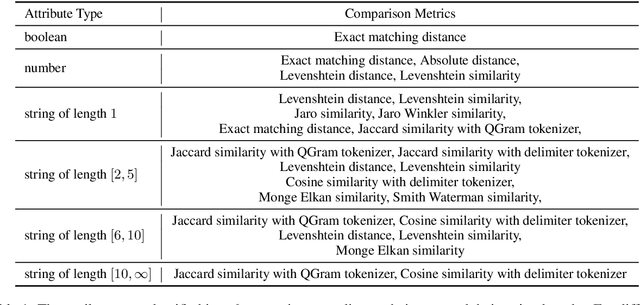
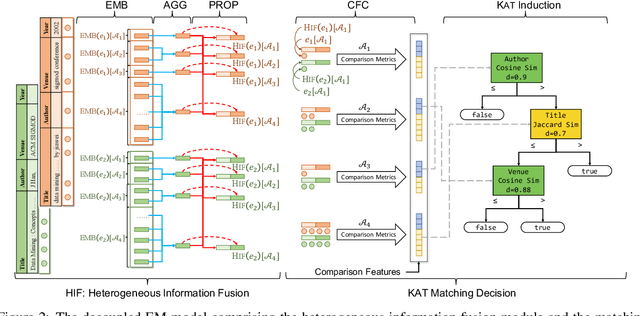
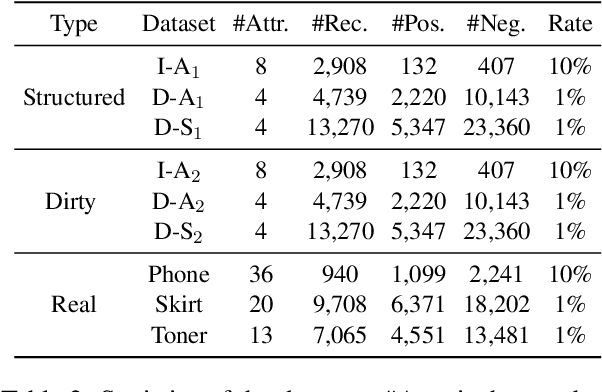
Abstract:Entity Matching (EM) aims at recognizing entity records that denote the same real-world object. Neural EM models learn vector representation of entity descriptions and match entities end-to-end. Though robust, these methods require many resources for training, and lack of interpretability. In this paper, we propose a novel EM framework that consists of Heterogeneous Information Fusion (HIF) and Key Attribute Tree (KAT) Induction to decouple feature representation from matching decision. Using self-supervised learning and mask mechanism in pre-trained language modeling, HIF learns the embeddings of noisy attribute values by inter-attribute attention with unlabeled data. Using a set of comparison features and a limited amount of annotated data, KAT Induction learns an efficient decision tree that can be interpreted by generating entity matching rules whose structure is advocated by domain experts. Experiments on 6 public datasets and 3 industrial datasets show that our method is highly efficient and outperforms SOTA EM models in most cases. Our codes and datasets can be obtained from https://github.com/THU-KEG/HIF-KAT.
Learning Syllogism with Euler Neural-Networks
Jul 20, 2020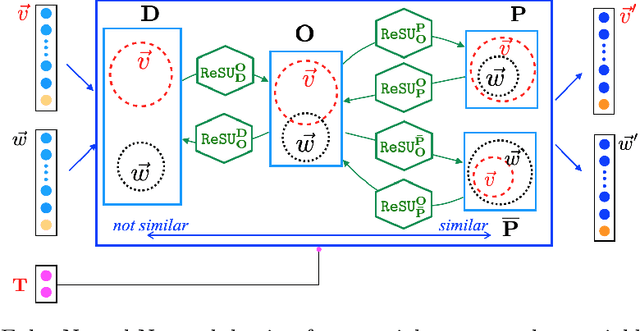
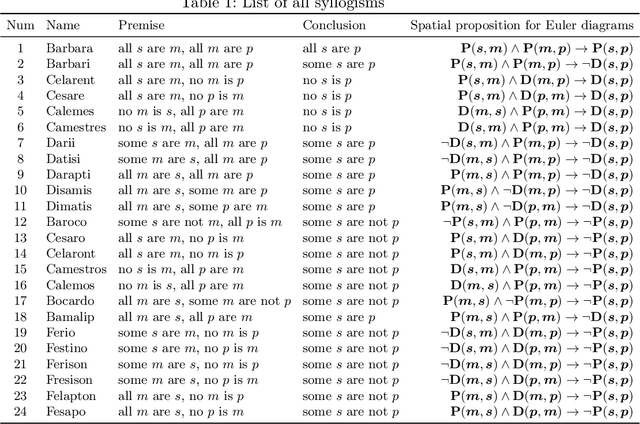
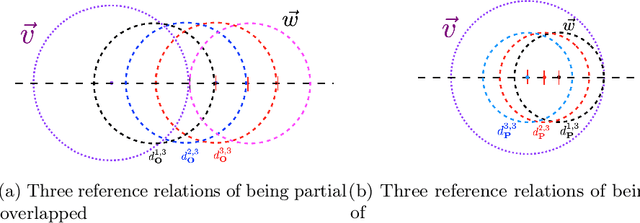

Abstract:Traditional neural networks represent everything as a vector, and are able to approximate a subset of logical reasoning to a certain degree. As basic logic relations are better represented by topological relations between regions, we propose a novel neural network that represents everything as a ball and is able to learn topological configuration as an Euler diagram. So comes the name Euler Neural-Network (ENN). The central vector of a ball is a vector that can inherit representation power of traditional neural network. ENN distinguishes four spatial statuses between balls, namely, being disconnected, being partially overlapped, being part of, being inverse part of. Within each status, ideal values are defined for efficient reasoning. A novel back-propagation algorithm with six Rectified Spatial Units (ReSU) can optimize an Euler diagram representing logical premises, from which logical conclusion can be deduced. In contrast to traditional neural network, ENN can precisely represent all 24 different structures of Syllogism. Two large datasets are created: one extracted from WordNet-3.0 covers all types of Syllogism reasoning, the other extracted all family relations from DBpedia. Experiment results approve the superior power of ENN in logical representation and reasoning. Datasets and source code are available upon request.
Multi-Channel Graph Neural Network for Entity Alignment
Aug 26, 2019



Abstract:Entity alignment typically suffers from the issues of structural heterogeneity and limited seed alignments. In this paper, we propose a novel Multi-channel Graph Neural Network model (MuGNN) to learn alignment-oriented knowledge graph (KG) embeddings by robustly encoding two KGs via multiple channels. Each channel encodes KGs via different relation weighting schemes with respect to self-attention towards KG completion and cross-KG attention for pruning exclusive entities respectively, which are further combined via pooling techniques. Moreover, we also infer and transfer rule knowledge for completing two KGs consistently. MuGNN is expected to reconcile the structural differences of two KGs, and thus make better use of seed alignments. Extensive experiments on five publicly available datasets demonstrate our superior performance (5% Hits@1 up on average).
Joint Representation Learning of Cross-lingual Words and Entities via Attentive Distant Supervision
Nov 27, 2018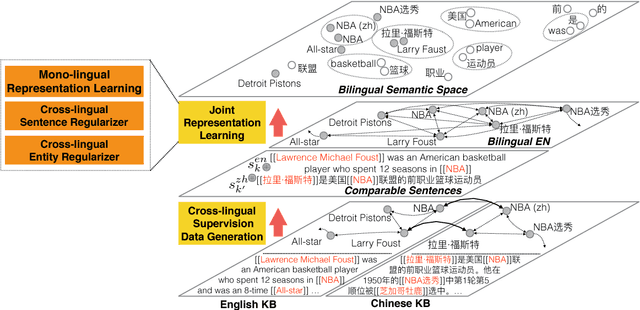
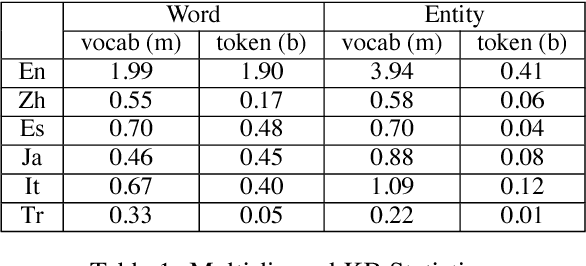
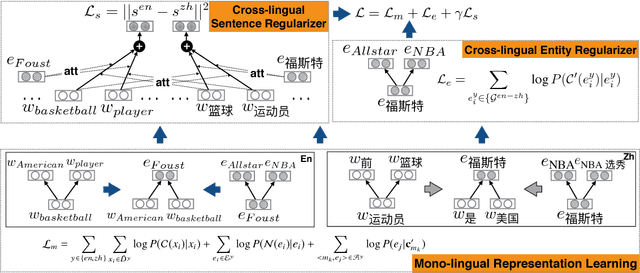
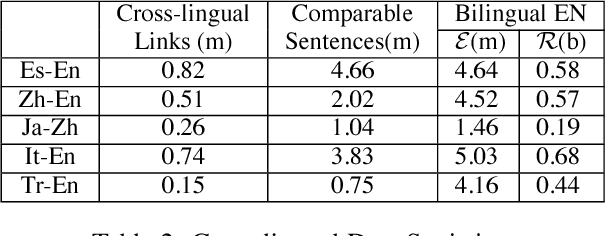
Abstract:Joint representation learning of words and entities benefits many NLP tasks, but has not been well explored in cross-lingual settings. In this paper, we propose a novel method for joint representation learning of cross-lingual words and entities. It captures mutually complementary knowledge, and enables cross-lingual inferences among knowledge bases and texts. Our method does not require parallel corpora, and automatically generates comparable data via distant supervision using multi-lingual knowledge bases. We utilize two types of regularizers to align cross-lingual words and entities, and design knowledge attention and cross-lingual attention to further reduce noises. We conducted a series of experiments on three tasks: word translation, entity relatedness, and cross-lingual entity linking. The results, both qualitatively and quantitatively, demonstrate the significance of our method.
 Add to Chrome
Add to Chrome Add to Firefox
Add to Firefox Add to Edge
Add to Edge